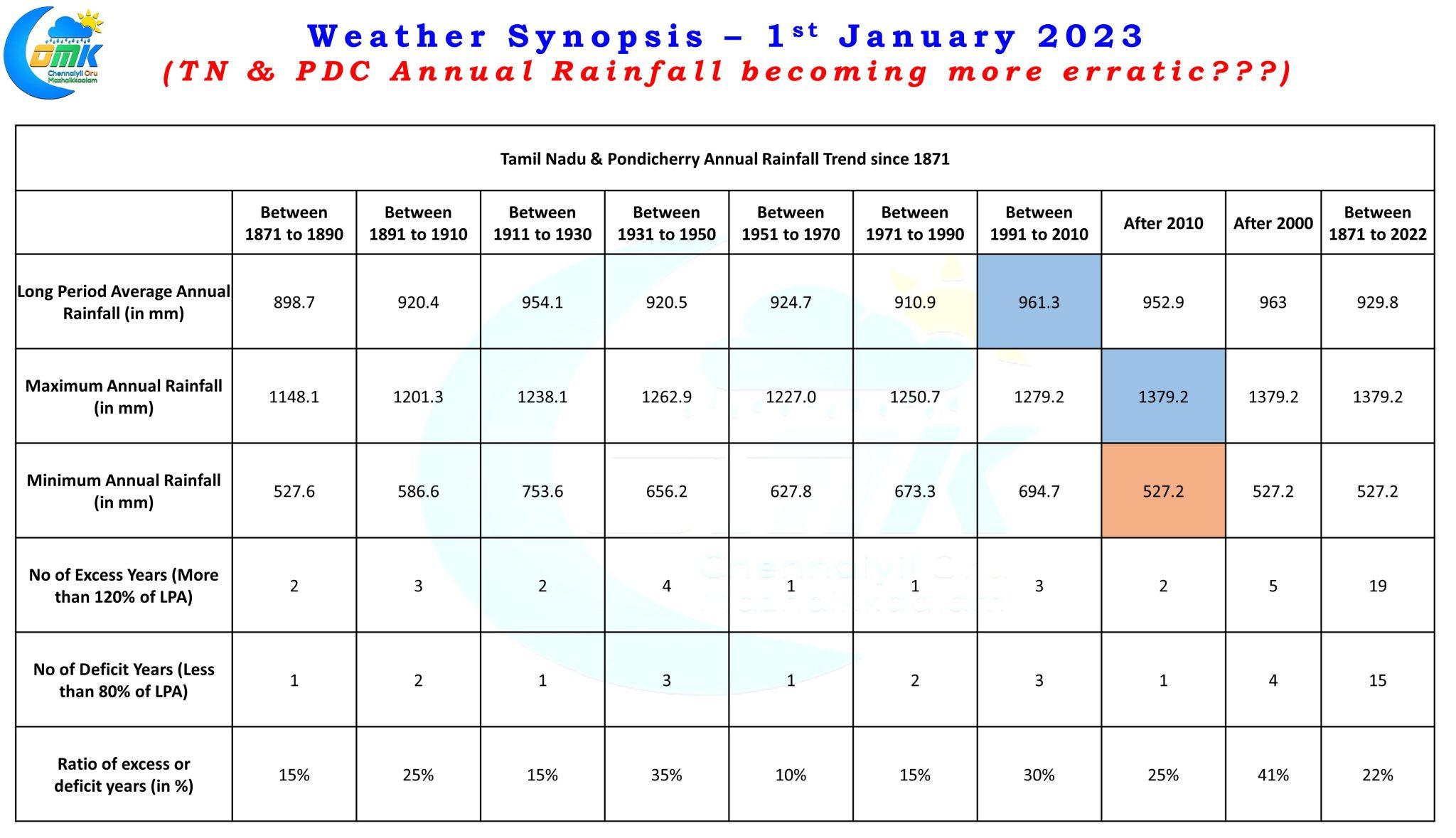Pendulum
A pendulum is an object hung from a fixed point that swings back and forth under the action of gravity. In the example of the playground swing, the swing is supported by chains that are attached to fixed points at the top of the swing set. Scientific American
Unlike Southwest Monsoon which is a very well researched weather phenomenon Northeast Monsoon is not researched as often though Tamil Nadu gets nearly half of its annual rainfall in this period between October and December. With more interest from weather bloggers today we are seeing a lot of informal studies being done to understand in a hope in the days to come there is more interest among academic researchers to study Northeast Monsoon in a more systemic manner.
Today’s post is based on the study Monthly, Seasonal and Annual Rainfall Time Series for All-India, Homogeneous Regions and Meteorological Subdivisions: 1871-2016, Kothawale D.R., Rajeevan M., August 2017, RR-138 for the period 1871 to 2016 and for the years subsequently data from the annual reports of IMD has been used. The idea behind the post was to understand if there is any pattern to Northeast Monsoon and could it help in not only disaster management but also agricultural practices. If one plots the seasonal rainfall during Northeast Monsoon period from the year 1871 to 2022 for Tamil Nadu and Pondicherry sub division it almost resembles a simple harmonic motion with oscillating episodes of excess and deficit rainfall. It becomes pertinent to point out here one of the reasons why pendulum clocks maintain accurate time is because of the the simple harmonic motion.





Out of the 152 years since 1871 Northeast monsoon for TN & PDC has seen excess rains (More than 120% of Long term average) in 40 years while it has seen deficit rains (Less than 80% of Long term average) in 44 years effectively making 88 out of 152 years either a deficit or excess. So in a way predicting seasonal rainfall for Northeast Monsoon is like a toss of the coin. Except for the 20 years between 1951 to 1970 all the other 20 year periods from 1871 has seen more than half of the years as excess or deficit during Northeast Monsoon with the period 1891 to 1910 seeing excess or deficit for 7 out of 10 years being the most inconsistent period. It is interesting to note this period also sees the lowest long period average during NEM season at 431 mm nearly 80 mm lower than 1991 to 2010 which has a long period average of 509 mm. The period 1991 to 2010 has to be the best period for Northeast Monsoon without doubts with an overall average of 509 mm for this period on the back of 9 consecutive years of 400 mm or above rainfall during NEM between 2004 and 2012.
A look at the annual rainfall for the same period does indicate things are not as wild overall possibly modulated by a more sober Southwest Monsoon performance which is slowly turning out to be bullet proof for Tamil Nadu and Pondicherry. While overall only one in every five years is either an excess or deficit year for TN & PDC there is a worrying trend if one were to dig a little deeper. Since the turn of the century four out of ten years have been either an excess or a deficit year annual for TN & PDC.
Nothing highlights this trend than a look at the numbers for the post 2010 period which has both the highest and lowest annual rainfall since 1871. 2021 which saw the highest annual rainfall of 1379.2 mm while 2016 saw the lowest ever recorded annual rainfall since 1871 at 527.2 mm Whether is this a long term trend change or not remains to be seen but it is worth keeping a close watch on.
While this study is done on an overall basis for Tamil Nadu and Pondicherry it may be worthwhile to do similar exercises at district levels to understand for patterns that could give clues / answers for future preparedness.
On behalf of #COMK we wish you and your family a happy and prosperous new year. Our journey so far has been towards creating a #Weather wise community and we hope atleast a few of you have benefitted from this approach of ours rather than spoon feeding. #HappyNewYear

